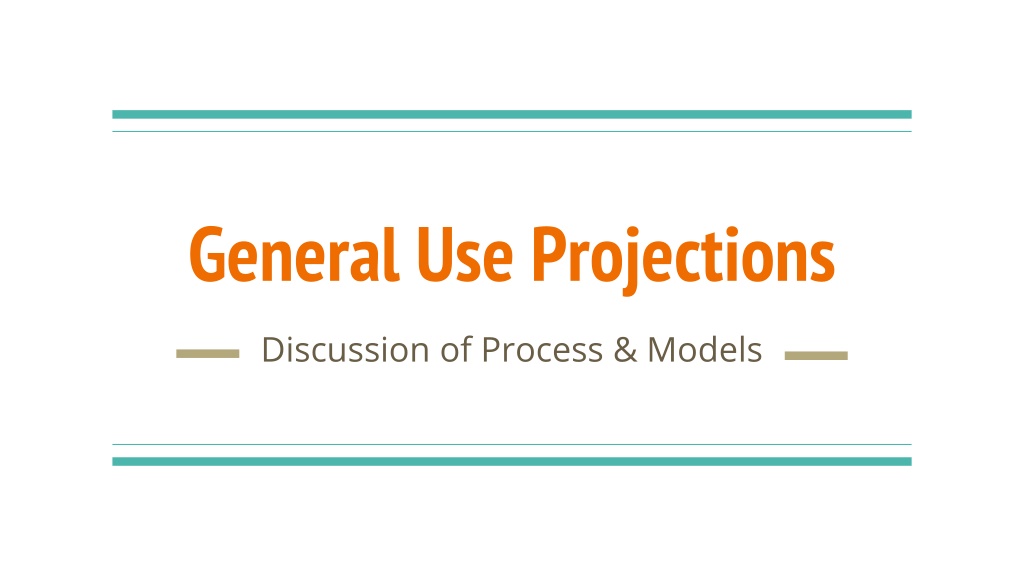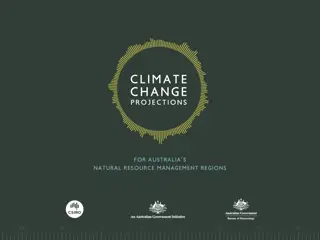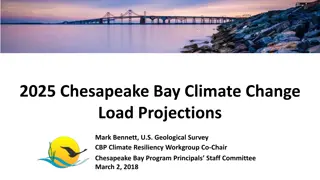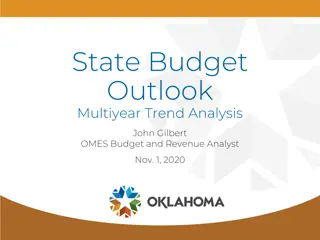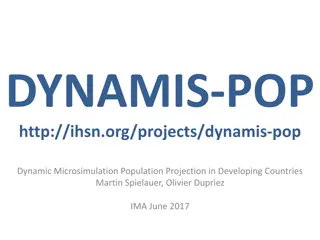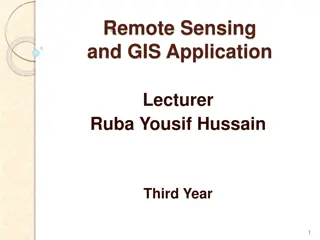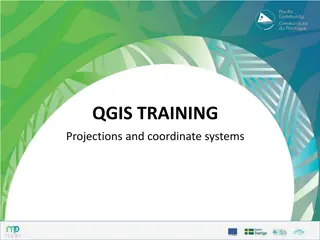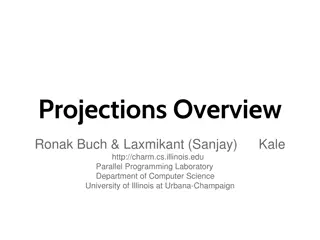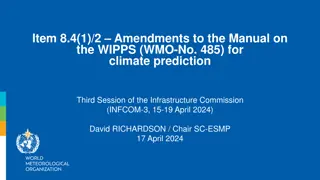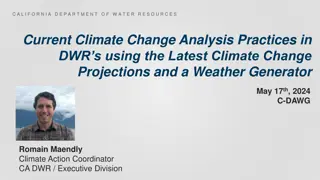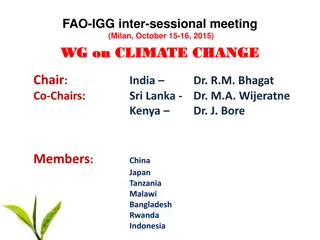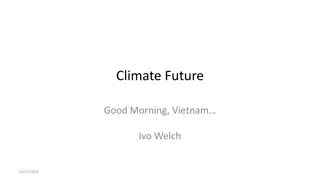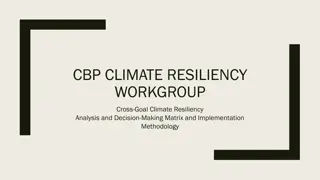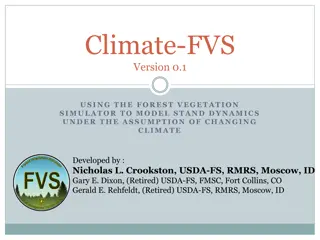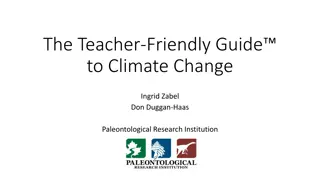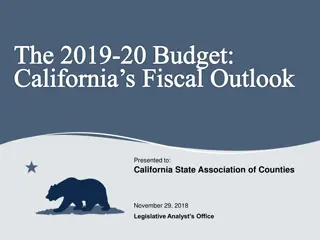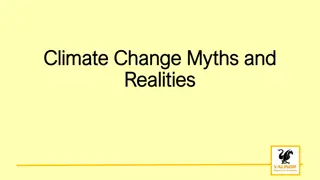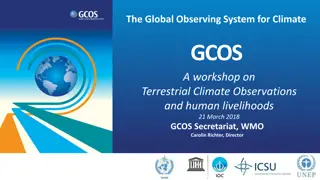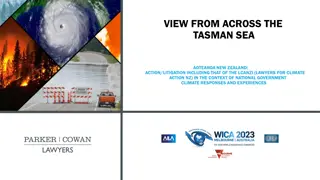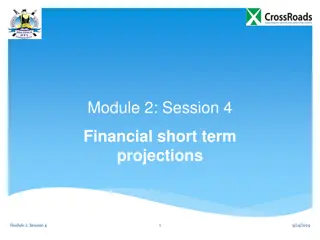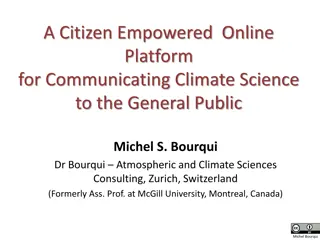Insights into General Use Projections for Climate Analysis
Explore the significance of General Use Projections in climate research, understanding their role in capturing future projections effectively. Learn about considerations for selecting these projections, key metrics to focus on, and guidelines for incorporating a diverse range of models. Discover proposed General Use Projections and their impact on analyzing annual temperature and precipitation changes.
Download Presentation

Please find below an Image/Link to download the presentation.
The content on the website is provided AS IS for your information and personal use only. It may not be sold, licensed, or shared on other websites without obtaining consent from the author. Download presentation by click this link. If you encounter any issues during the download, it is possible that the publisher has removed the file from their server.
E N D
Presentation Transcript
General Use Projections Discussion of Process & Models
General Use Projections 1-01 What are General Use Projections? A minimum subset of the 199 downscaled LOCA Hybrid GCM runs that can reasonably capture the range of future projections Why have General Use Projections? Provide a starter-set of models for those less comfortable with large amounts of data Allows the use of a uniform set of projections across different analyses to support coordination, comparisons and collaboration across jurisdictional and other types of boundaries Should I only use the General Use Projections? No, it is always better to use the full set of runs if you are able Using the General Use Projections is the minimum number of projections that should be used in any analysis
Considerations for Selection of General Use Projections Target SSP370 with a 2045-2074 mid-century period, which many users have identified as a high priority and is far enough in future to capture climate change signals. Favor including projections that have WRF data available Pare down metrics to a small number because too many uncorrelated metrics would reduce the ability of the metrics to usefully distinguish between models. Metrics include temperature, precipitation and wind. Favor metrics that are simple variables; avoid those that are derivatives of several variables. Ensure the models selected capture the range of GCMs and ensemble members. Selection did not consider time series/sequences (special cases will cover, e.g., droughts) Exclude GCMs that have an unrealistically high climate sensitivity based on Tokarska et al., 2020 and Hausfather et al., 2022
Proposed General Use Projections -> Annual T and P changes are largely independent
Proposed General Use Projections
Proposed General Use Projections
Proposed General Use Projections
Proposed General Use Projections *FGOALS-g3 did not save wind, so LOCA has all vars except wind
Tmax & Heatwaves Relationship -> Annual T changes correlate well with 2-day heat waves
Tmax & Cold Snap Relationship -> Annual T changes correlate with 2-day cold snaps
Precip & Wet Extremes (Flood) -> Annual P changes correlate well with 3-day wet periods
Temp & Wind Speed -> Some correlation of annual T changes and wind speed
Precip & Wind
Drought & Heatwaves
Wind Speed & Heatwaves
Limitations of General Use Projections General use projections are, by design, meant to be limited Models evaluated for a limited set of metrics, scales and scenarios Mid-century, SSP370, all of CA, and largely for temperature and precipitation May not cover all user-relevant ranges e.g. different time periods, SSP scenarios, locations, and/or variables Wherever possible, it is recommended to use a larger set of runs to analyse the range of plausible outcomes for specific applications For frequency of extreme events, especially the most extreme, a few GCM simulations may not capture the variability in extremes well Forthcoming Analytics Engine tools will help to more easily conduct preliminary analyses with larger datasets
Final Thoughts The 5 selected G.U.P. s capture the range of projected temperature and precipitation changes for SSP370, all of CA & mid-century; capture the wind except the quadrant of greatest decrease in wind Access-CM2 r1i1p1f1 CNRM-ESM2-1 r1i1p1f2 EC-Earth3 r1i1p1f1 FGOALS-g3 r1i1p1f1 MPI-ESM1-2-HR r3ilp1f1 Did not select on extremes, annual mean precipitation and temperature changes correlate with changes in extremes (heatwaves, cold snaps, floods, droughts) Changes in wind speed by GCM vary regionally (not shown)
LOCA2 Hourly Temperature Projections for Individual CEC Requested Stations Overview Projections of hourly surface temperatures from 1950-2100 at individual locations Based on LOCA method* and existing LOCA2 gridded 3km downscaled CMIP6 daily Tmax and Tmin results 33 stations 32 CA + Las Vegas station locations of importance requested by CEC demand forecast unit Includes all models from LOCA CA dataset (15 GCMs with up to 10 ensemble members each, depending on SSP2-4.5, SSP3-7.0, or SSP5-8.5) Analog matching method Better represents hourly variability compared to traditional climatological diurnal cycle approach Map of the 33 stations, 4 new stations in this version labeled red *Pierce and Cayan 2019 https://cirrus.ucsd.edu/~pierce/tmp/Hourly_data_interpolation_2019-05-23.pdf
LOCA2 Hourly Temperature Projections for Individual CEC Requested Stations (2) Projections are complete 129 total simulations for each of the 33 stations = 4,257 total Next steps are to finalize documentation and share data with the Analytics Engine team What s new in Version 2 Projections based on LOCA2 (CMIP6), featuring latest generation of available models, SSP scenarios, and ensemble members compared to Version 1 (CMIP5) 4 additional stations in northern California Longer period of record for most stations from HadISD, the historical hourly temperature training data provided by Eagle Rock Analytics Method improved to better represent difference between wet vs. dry days Method improved to ensure that hourly values more closely match the input LOCA Tmax and Tmin
Appendix: Proposed General Use Projections (End of Century)
